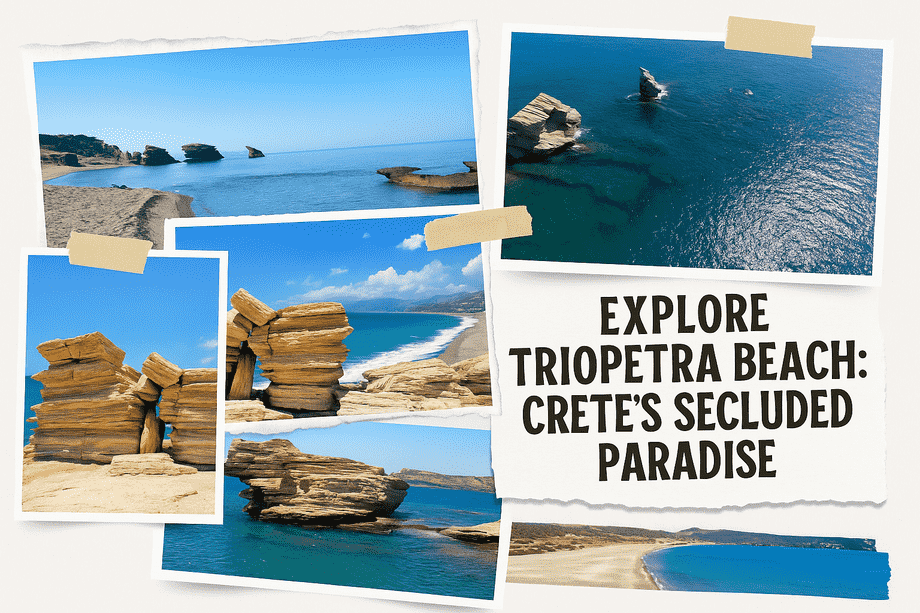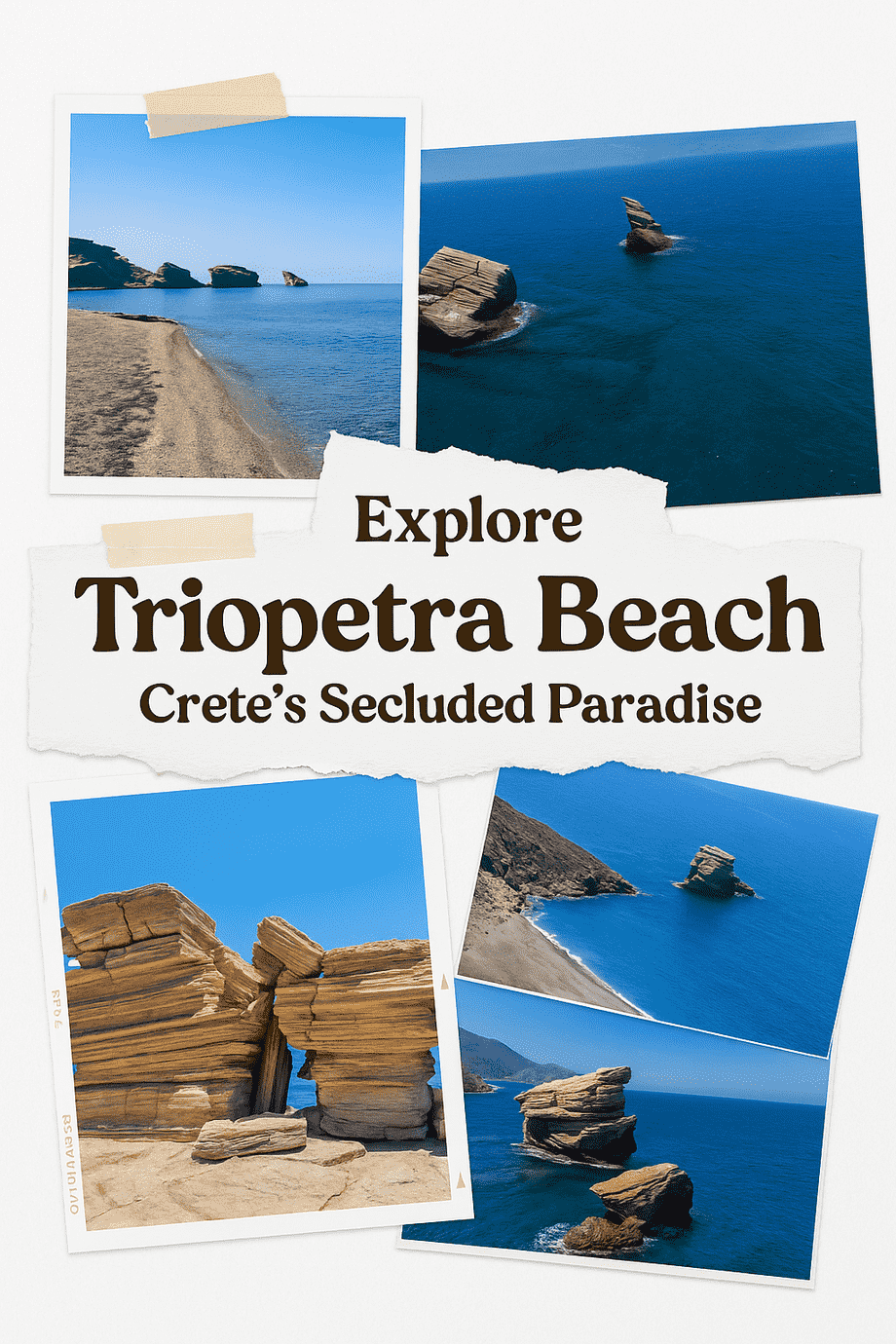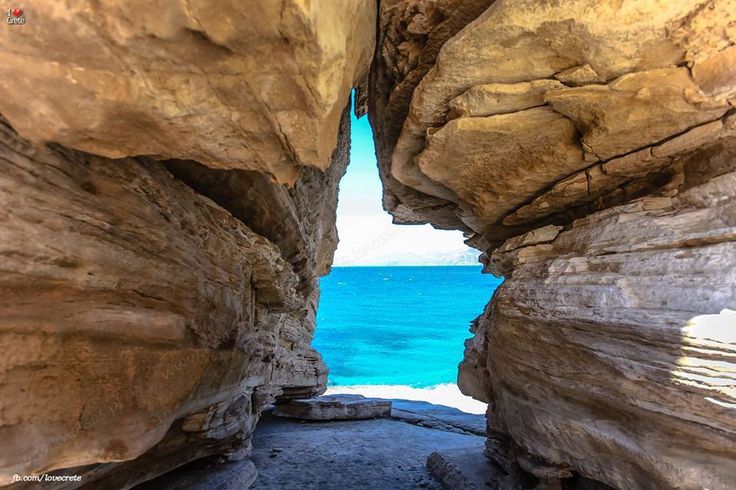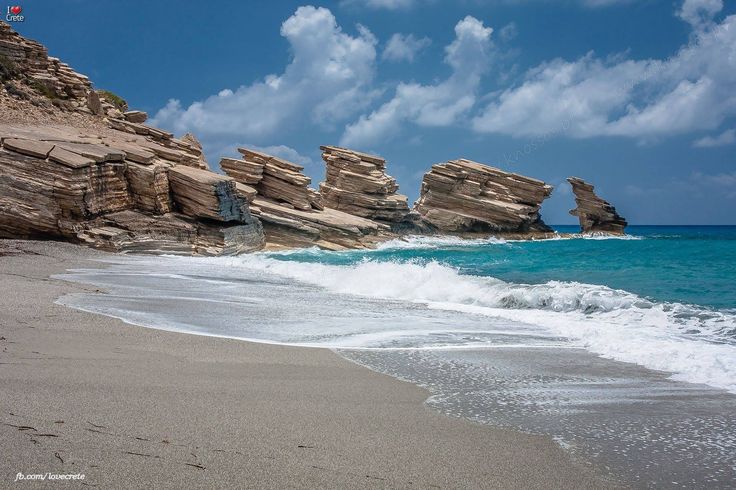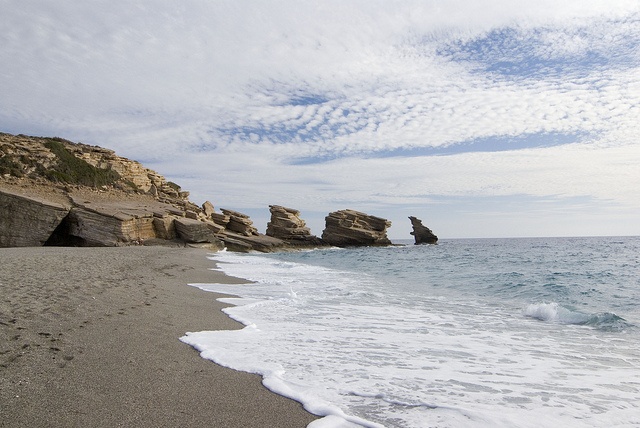Explore Triopetra Beach: Crete’s Secluded Paradise
Far from the crowded resorts and bustling tavernas of northern Crete lies a place so serene, so untouched, it feels like a well-kept secret whispered only among the most intrepid travelers. Triopetra Beach, tucked away on the island’s southern coast, offers more than just a beautiful coastline—it offers a complete departure from the conventional holiday experience. With its otherworldly rock formations, turquoise waters, and tranquil atmosphere, Triopetra is a destination for those who crave connection with nature, solitude, and authenticity. While northern Crete’s beaches are loved for good reason, Triopetra remains the perfect answer to mass tourism fatigue. If your idea of a perfect vacation involves fewer people, fewer beach umbrellas, and more raw beauty, keep reading.
Where is Triopetra Beach?
Triopetra Beach is located approximately 52 kilometers south of Rethymno, nestled in the region of Akoumia, in the south-central part of Crete. The drive takes around 1.5 hours, depending on the winding mountain roads, and offers scenic views of olive groves, gorges, and rugged cliffs. This part of Crete is far less developed than the north, meaning fewer buses and tourists. Renting a car is the most convenient option to reach Triopetra, though some adventurous travelers might consider hiring a local taxi or taking infrequent buses to the nearby villages of Akoumia or Agios Pavlos.
The Meaning Behind the Name
“Triopetra” translates from Greek to “three stones,” a name inspired by the iconic three large rocks that rise majestically from the sea at one end of the beach. These natural formations are not just photogenic landmarks—they also create an aura of mystery and isolation. Depending on the time of day, the light dances on the rocks in different ways, casting shadows and colors that make every visit feel unique. At sunset, the rocks glow golden, and the sea reflects pink and orange hues, giving the area a dreamlike atmosphere.
The Beach Vibe: What to Expect
Triopetra is essentially split into two parts: the main beach, which stretches wide with coarse golden sand and is backed by low cliffs and minimal development, and Small Triopetra (also known as Mikri Triopetra), a neighboring cove with smaller pebbles and a more intimate setting. Both beaches boast crystal-clear water and are known for being exceptionally clean. You won’t find beach bars blasting music or rows of loungers here. Instead, expect silence, space, and the occasional sound of waves or seabirds. The beach is usually uncrowded even in peak summer months, especially in the mornings and late afternoons. This makes it an ideal place for yoga, meditation, reading, or simply unwinding without interruption.
Facilities and Amenities
Triopetra is not entirely devoid of amenities, but you won’t find resort-level infrastructure here—and that’s part of the charm. There are a couple of tavernas along the road leading to the beach, including one right above the sands, offering fresh seafood, grilled meats, and local Cretan dishes such as dakos and moussaka. Expect to pay around €10–15 per meal, with a carafe of local wine costing about €5–7. The beach is partially organized: a few umbrellas and sunbeds are available to rent for about €6–€8 for a pair, but there is plenty of open sand where you can lay down your towel for free. Showers and changing areas are not widely available, so come prepared. A small number of rooms and studios for rent can be found nearby, particularly in the area of Akoumia or Agios Pavlos, with prices starting from €35–€50 per night depending on the season. For those who prefer more comfort, staying in Rethymno and making Triopetra a day trip is a great option.
Activities Around Triopetra
While many visitors come just to relax, there’s more to do around Triopetra than meets the eye. The clear waters make it ideal for snorkeling; you can spot small fish and marine life near the rocky edges. Photography enthusiasts will be drawn to the dramatic landscape—especially at sunrise or sunset when the lighting is spectacular. Hikers can explore the surrounding hills or make their way to Preveli Beach to the east, passing through some of Crete’s most beautiful coastal trails. Boat rides can be arranged from nearby villages, offering access to hidden coves or day trips to less accessible beaches. For a cultural touch, visit the nearby Spili village with its Venetian fountains and traditional shops, or wander through the olive-covered
What to Bring With You
Since facilities are limited, pack with intention. Bring enough water, especially during the hotter months of July and August, when temperatures can exceed 35°C. Sun protection is essential: the sun reflects intensely off the sand and water, so hats, sunglasses, and high-SPF sunscreen are recommended. Water shoes might come in handy, especially on the pebbled parts of the beach and near the rocky shallows. A lightweight towel, beach mat, and a good book will serve you better here than inflatable beach toys or speakers. If you’re planning to stay for the sunset (highly recommended), bring a light jacket—evenings can get cool and breezy after dark, especially in spring and autumn.
Best Time to Visit
Triopetra is lovely year-round, but the best time to visit is between May and mid-October. In May and June, the beach is in full bloom with wildflowers, temperatures are pleasant, and crowds are almost non-existent. July and August are the warmest and driest months, and while more tourists are on the island, Triopetra remains relatively peaceful. September and early October offer warm seas and cooler days, perfect for long swims and sunset watching without the summer heat. If you’re looking for true solitude, late April or late October are also good options, though some of the tavernas may be closed, and weather can be more unpredictable.
Local Insights and Travel Tips
Crete’s southern coast has always had a different pace than the north. It’s windier, wilder, and less commercial—Triopetra fits this character perfectly. Don’t expect nightlife or shopping here. Instead, savor the slowness. Eat fresh sea urchin or grilled octopus in a taverna run by the same family for generations. Speak to locals—they’re warm, hospitable, and full of stories about the beach and its legends. Try Cretan mountain tea, or “malotira,” and keep an eye out for the rare kri-kri goats in the cliffs above. If you’re an early riser, the beach offers unparalleled sunrises. Camping is not officially allowed but tolerated in some corners, especially if you leave no trace.
Final Thoughts: Why Triopetra Should Be on Your List
Triopetra Beach is not for everyone, and that’s its greatest strength. It lacks the polished veneer of luxury resorts or the convenience of city beaches, but offers something far more rare: peace, purity, and the chance to reconnect—with nature, with yourself, and with a part of Crete that remains stubbornly authentic. Whether you come for a few hours or a few days, the impression it leaves is lasting. In a world increasingly crowded with “must-see” lists and over-exposed landmarks, Triopetra invites you to slow down, to breathe, and to rediscover the joy of hidden beauty.
Images via: Pinterest

